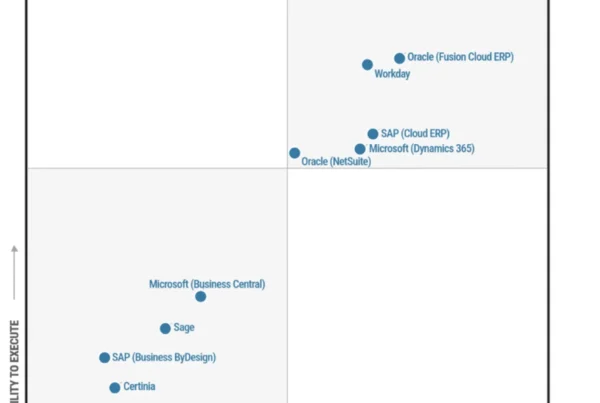Finance teams’ roles have evolved—and expanded—into new realms. As economic pressures demand that everyone deliver more with fewer resources, finance professionals’ plates are increasingly crowded with analysis, strategy, even supplier relationships—plus all the traditional finance processes they’ve long been responsible for.
It’s not just moving invoices along—finance teams are being asked by upper management to bring cost-saving, time-optimizing, and value-adding insights to the table when business model evolution and digital transformation are discussed. And they’re looking for any solution that will give their overstretched employees time back in their day to think bigger, by tightening up tedious processes that drain human energy and douse the spark of innovation.

The Future of Finance
Streamline your accounts payable process and free up resources to fund your business transformation
For finance teams, incorporating automation into accounts payable (AP) is a great place to start. After all, the work of capturing invoices, processing and verifying them, then paying vendors can be complex—with plenty of sub-processes to support the end goal of on-time payments and stronger customer relationships. Automating parts of the accounts payable process lets finance teams spend less time on repetitive tasks and more time on higher-value work that builds agility in finance operations and across your business.
5 ways accounts payable automation elevates finance operations
To get started on your AP automation journey, check out this webinar, The Future of Finance: Unlocking the Benefits of Accounts Payable Automation, and learn how automating accounts payable data can help you:
1. Focus on strategy—not tedious data tasks
Allow your finance teams to put more energy where it matters—fulfilling, strategic work that keeps them engaged—not cumbersome accounts payable processes that waste time and drag down productivity.
2. Reign in costs and unnecessary fees
Understand payment trends, analyze vendor performance, and improve processing time to drive significant savings. Cut paper costs by automating manual processes, while helping avoid handwritten errors that lead to mistakes and late payment fees downstream.
3. Stop small errors from becoming big problems
Improve accuracy with automated accounts payable software that limits the unavoidable errors inherent with manual data entry—so you sidestep risk now while dialing in what you need for compliance later.
4. Get to know your vendors
Strengthen vendor relationships by automating AP processes to pay them on time, every time. And over time, analyze accounts payable data to reveal valuable cost-saving insights that put you on more solid footing for future negotiations.
5. Gain more visibility
Put more eyes on your cashflow to help people across your business focus more on cost savings. Empower everyone—not just data specialists or finance operations teams—to support larger initiatives with more readily available data.
When should you automate accounts payable?
To keep pace with competitors, you’re probably looking at ways your finance team can integrate new technology into traditional processes like accounts payable that have long kept business’ bottom lines in order. Because the pace of business isn’t slowing, nor are potential disruptions retreating. To respond to changing business conditions and guard against long-term risk, finance leaders are starting to recognize how the latest AI-powered automation can help them take on what’s currently taking up too much of their employees’ time:
- Complex processes: The more complex the process, the more challenging it can be to manage effectively. Inefficient processes with too many steps are not only a drag on people’s time and energy, they’re often a barrier to digital transformation. When that leads to a delayed payment, it can damage customer relationships that have taken years to build—putting the wrong kind of spotlight on finance teams.
- Strained IT: When organizations are facing flat (or shrinking) IT budgets and people don’t have the tools they need, it’s hard to build consistent processes. A lack of IT budget is more than annoying; unreliable systems can overwhelm employees, get in the way of strategic work they’d rather be doing, and make it tougher to follow processes that finance regulations demand.
- Data overload: Invoices, payment records, information on multiple vendors—all that data is difficult to manage on its own. When people naturally turn to manual processes to make sense of it all, it’s often time intensive and susceptible to errors, fraud, and missed opportunities for insights.
- People power: Freeing up resources to hire new talent is tough enough, and retaining that talent is even tougher when mundane tasks fill up their plate. Engaging them in their current role with opportunities to be creative and offer strategic insights is often a better investment than trying to find, onboard, and retain a new hire.
If these obstacles sound familiar, automating accounts payable processes is a cost-efficient way to start moving your organization past them. When your company is ready to shift from managing cumbersome accounts payable operations to supporting strategic initiatives, Microsoft Dynamics 365 Finance can help.
How Dynamics 365 Finance modernizes accounts payable operations
Dynamics 365 Finance modernizes accounts payable operations by capturing invoices in multiple formats (digital and manual), processing them while coding and resolving errors with full automation, then automatically paying vendors on time—with analytics around payment scenarios and compliance gathered in real time. Be sure to watch the webinar to learn more, including how one Microsoft customer cut invoice costs in half and reduced overall costs by 25 percent by streamlining procedures across their business, including invoice processing, with accounts payable automation. It also features a demo of how to use AI-powered automation to accelerate digital transformation with Dynamics 365 Finance.
We’re always looking for feedback and would like to hear from you. Please head to the Dynamics 365 Community to start a discussion, ask questions, and tell us what you think!






